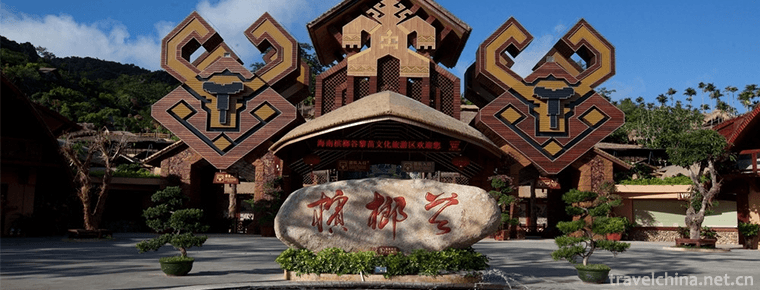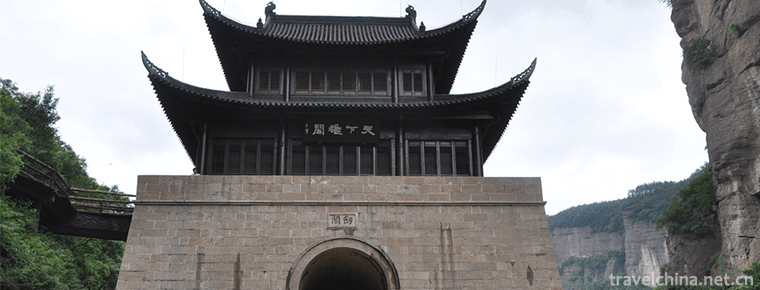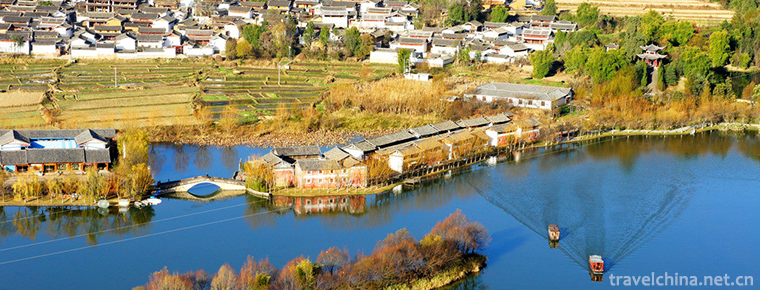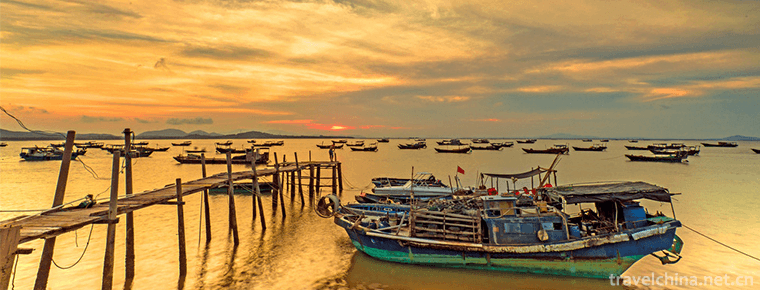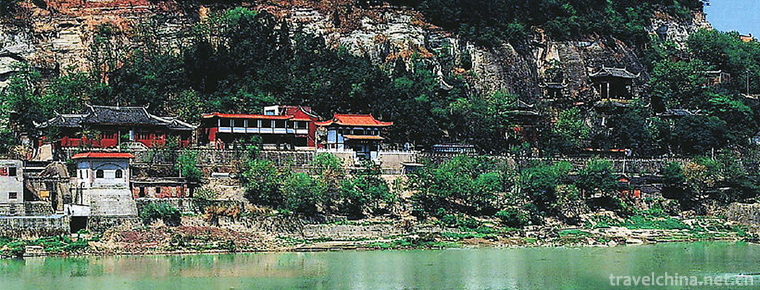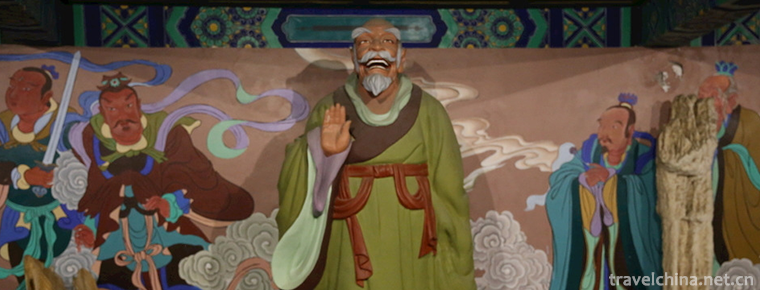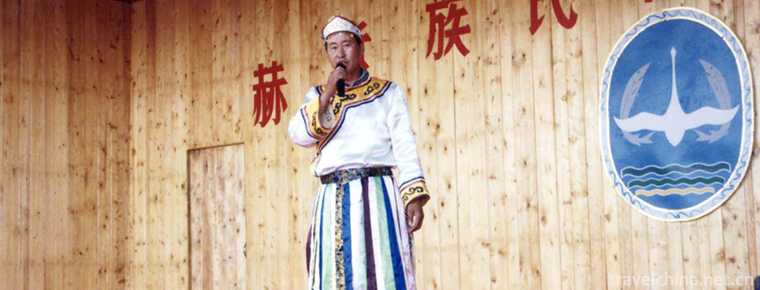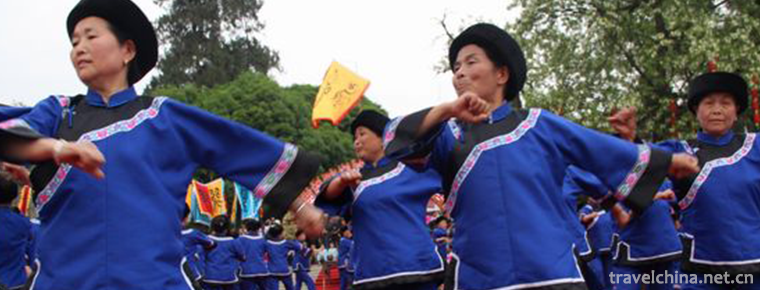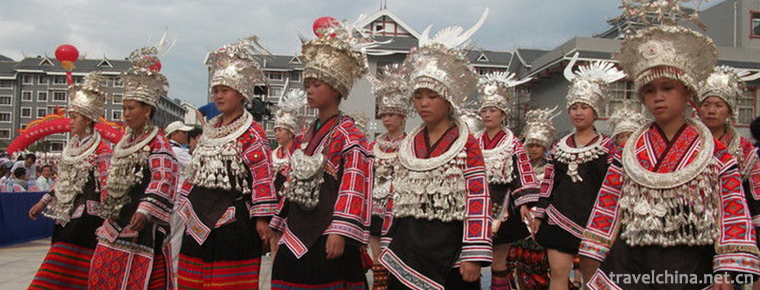Dragon Boat Making Skills
Dragon Boat Making Skills
Dragon boat craftsmanship is an ancient traditional handicraft. Zhongtang Town, Dongguan City, Guangdong Province, has a history of more than 1000 years. Zhongtang Town is a typical water town, located in the water network zone of the Dongjiang tributary, with vertical and horizontal rivers and wide waters. Now it is the only town in Dongguan and its neighboring cities and counties that has a dragon boat workshop. The main production of the hall is "Big Dragon" with high stilts.
On June 7, 2008, the craftsmanship of dragon boat production was approved by the State Council and listed in the second batch of national intangible cultural heritage list.
The production of Zhongtang dragon boat has a history of more than 100 years. The main dragon boat made by Zhongtang is "Big Head Dragon". That is to say, the front of the dragon boat is equipped with a faucet, which is high and elegant. This type of dragon boat is slender, like willow leaves, 28.5 meters long, with a total of 28 rows of seats, and can ride 56 rowers. Its structure is divided into faucet, dragon tail, keel, longchang, leopard and other parts.
The technological process of dragon boat production is as follows: choosing base bone (keel) - starting from the bottom - starting water - drawing level - turning water - making big side - doing crossbar - making sitting board - anlongchang - strengthening midgut - tung oil ash - smoothing - varnish - making installation faucet - installing tail rudder. The production time is 6 or 7 days. The dragon boat made in Zhongtang is well designed, accurate in size, superior in materials, strong, powerful, smooth and exquisite in craftsmanship. It is very popular among the people.
Historical origin
In the late Ming and early Qing Dynasties, Qu Dajun, a well-known scholar in Guangdong, wrote in Guangdong Xinyu: "Dragon boats in Guangzhong are the most prosperous in Dongguan, from May Shuo to Hui, and there are many villages and townships." Dongguan "May when the flood, placed in a hundred miles, the villagers for the Dragon Boat meeting, the viewers painted boats, head and tail rank, ladies and gentlemen like mountains, ride the tide up and down, the day is not over." If there is such a grandest dragon boat activity, there must be the grandest dragon boat production. The Honghua Temple in Dafen Village still has the "flying dragon" dragon bow made in the Ming Dynasty, which can be proved.
Out of the worship of dragons, the past dynasties have been quite fastidious in the production of dragon boats. The Dragon Boat built by Emperor Yangdi in Sui Dynasty for the south of the Yangtze River was one of the most luxurious "dragon boats" in history. It was said that the boat was 45 feet tall, 200 feet long, totaling four floors and 120 rooms, which could be comparable to the current ocean boat. After the dragon boat was burned down, Emperor Yangdi of the Sui Dynasty ordered the construction of a larger dragon boat, known as the "boat of the Son of Heaven".
Dragon Boat is generally divided into four parts: the Dragon head, the Dragon body, the keel and the Dragon tail, plus oars and rudders. Dragon boat production is very demanding. Special woodworkers should be invited to start the work on a day-by-day basis. It is said that in the past, people had to fasting and bathing, burning incense and worshipping gods before the start of the work, which could not be sloppy at all. Wood to choose the best, and mostly use large wood to make, such as taps, generally need to use the whole block of birch wood to carve, in order to be full of spirit, as for the hull, camphor wood is mostly used to do, because camphor wood can prevent insects and corrosion, durable. Making exquisite also carved many scales with the whole wood dragon tail. The dragon boat is made with various colors of heavy makeup to make it more lifelike. It costs a lot to make a dragon boat with traditional materials (camphor, birch, etc.) and traditional methods (tenons are all made of wood needles instead of steel nails). Therefore, the economic strength of the local people can be seen from the level of the dragon boats they own. Some ethnic minorities also have canoes, but such big trees are more difficult to find and waste wood. Nowadays, it is also made of fiberglass material, which is environmentally friendly and convenient, but it can not be popularized. The length of the dragon boat is also exquisite. The man-made dragon boats in Guangdong usually take the size of good intentions, such as the captain's 33.88 meters, which means "vigorous and vigorous". The hull of the Dragon Boat (unloaded by the tap) is usually sunk in the mud of the river pond to prevent cracking, which is also in line with the rumor of "Dragon's Life Daze". Every year it is only at the Dragon Boat Festival that the Dragon Boat Festival "please come out of the water".
The structure of the dragon boat is divided into several parts: the Dragon head, the Dragon tail, the keel, the Dragon sausage and the leveling board. "Traditional Dragon" is 28.8 meters long and 1.50 meters wide, while "International Dragon" is only 15.8 meters long and 1.05 meters wide. Making a dragon boat, from raw materials, selection of keel (base bone), water lifting (bending keel, streamlined) to planing, polishing, coloring, and finally installation of faucet, tail rudder and other processes, a complete dragon boat can only be completed, which generally takes six or seven days. We need to further implement the working principle of "protection first, rescue first, rational utilization, inheritance and development", conscientiously protect and manage intangible cultural heritage, and make new contributions to the promotion of Chinese culture and the great development and prosperity of socialist culture.
From good wood to dragon boat, it still needs to go through dozens of processes as it did hundreds of years ago. It takes six workers to work at the same time. It takes 20 days to nail hundreds of Jin of nails into the Dragon boat, consuming six cubic timber, countless times of manual polishing, smoothing and splicing to form the Dragon boat. This traditional folk handmade Dragon Boat method has continued to this day.
development history
China is the home of dragon boats and dragon boats. Dragon boat race has a history of thousands of years. Dragon boat is the embodiment of dragon, and dragon boat is the carrier of dragon boat race. Dragon boat production is not only related to the competition, but also to the inheritance of history and the development of traditional culture.
Dongguan City is a typical water town. Since the Ming Dynasty, it has been the main competitive area in Guangdong Province with a long history. Now, Zhongtang Town has been awarded the "Township of Chinese Dragon Boat" by the Chinese Dragon Boat Association. Dragon boat competitions are increasingly welcomed by local people, and the demand for dragon boats is increasing. With the improvement of dragon boat production technology, dragon boat race has been carried forward and inherited.
Habits and customs
As an important part of folk culture, dragon boat is a cultural symbol of the Chinese nation. Zhongtang has a 150-year history of large-scale dragon boat racing. Every May of the lunar calendar, there will be cheers, gongs and drums on the surface of Zhenjiang in Zhongtang. Zhongtang Dragon Boat Scenic Spot has not only "taking advantage of the scenery" (i.e. free competition), but also championships; there are Duolong on the second day of May, Chai cellar on the fourth day of June, Huangyong on the sixth day, Jiangnan on the eighth day, Ma Li on the eighth day, Zhongtang on the thirteenth day of May. They attract a large number of viewers from the second day of May to the thirteenth day of May of the lunar calendar, which is a good national fitness campaign.
The Dragon Boat making skills of Dongguan City were selected in the "Second batch of national intangible cultural heritage list" and "First batch of national intangible cultural heritage expansion project list" published by the State Council. Among the two batches of intangible cultural heritage announced this time, Dragon Boat making is the only item on the list in Dongguan.
Inheriting characters
I'm afraid the dragon boat will be unmanned.
According to Chaoshan Encyclopedia, "Dragon boats in Chaoshan area are represented by Jieyang." However, Yangcheng Evening News reporter in the famous town of Jieyang City - Jiedong Xichang Tanwangcun interview, but learned that the village "Dragon Boat Family" heir Wang Shujun family has been closed axe for many years since 2008, although invited by the neighbours to open axe again, but as he grew older, the younger generation no longer take the "oar", dragon boat manufacturing skills are still difficult to escape the embarrassment of "no one succeeded". (Source of Atlas)
Dragon Boat relay
Dragon boat maker Huo Zhuoxing:
It is a kind of behavior and a kind of spirit to keep fire and pay for each other. Beginning with this issue, Facebook will focus on a group of people who are either handcrafters, hung pots to help the world, or financial talents... They inherit their father's career and inherit the cream of the industry. Keep a lonely, stay a gorgeous.
Person Card:
Huo Zhuoxing, born in Zhongtang, Dongguan in 1961, began to learn how to make dragon boats and wooden boats at the age of 14. He has manufactured more than 300 dragon boats for decades, which is well known in the industry. Usually, he uses his own dragon boat production workshop to carry out activities, to teach enthusiasts dragon boat production skills, inherit traditions.
Every year, around the Dragon Boat Festival, the gongs and drums of the river networks in the Pearl River Delta gradually rise, and the dragon boat race is in full swing. Guangzhou Pearl River water surface is a boat shuttle, very lively. The prosperity of dragon boat race has made many villages and towns in Guangdong form Dragon Boat workshops that have been passed down from generation to generation, and trained many skilled shipbuilders, among which Huo Zhuoxing is one.
Dragon Boat Families Should "Receive Mountains"
Jieyang Shipbuilding Family is handed down from generation to generation and will soon be closed
The youngest member of Chaozhou Anbu Shipbuilding Team is also near Huajia.
Modern young people love dragon boating, but think it's hard work to build a boat.
Yesterday, Yanbu Laolong, the longest-lived dragon boat in the Pearl River Delta, officially started, marking the opening of the Dragon Boat season. Shah is a beautiful dragon boat, which needs many forces behind it, the most important of which is the craftsmen who built the Dragon boat. In Chaoshan area, dragon boat racing can be traced back to the Ming Dynasty, and the craftsmen of dragon boat building mostly in two places - Xichang Town of Jieyang City and Anbu Town of Chaozhou City .
Inheritance status
1. Establishment of protected areas. In Dongguan Zhongtang Town, Duolang and Dongxiang are protected areas.
2. Conduct general survey, excavation and arrangement of Zhongtang Dragon Boat production, compile and archive the process flow, etc.
3. Protect the craftsmanship of dragon boat, and record the craftsmanship, craftsmanship, material, process and working procedure of dragon boat.
4. To protect the inheritors of dragon boat production, to register and file teachers, and to establish a life security mechanism for inheritors and a training system for inheritors.

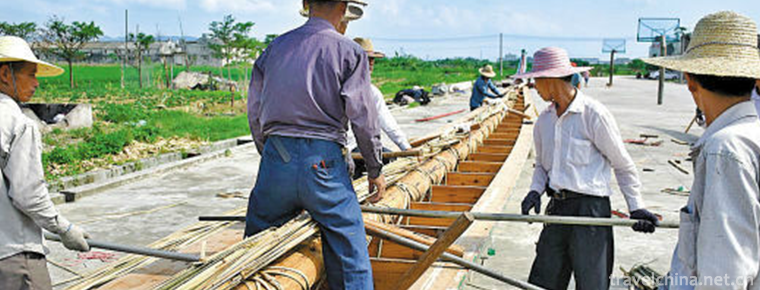
-
Donkey HamBurger
Donkey HamBurger is a popular traditional snack in North China. It originated in Baoding. Widely spread in the central Hebei Plain, the brine good donkey meat adds the old soup to join the crispy fire.
Views: 211 Time 2018-11-07 -
Betelnut Valley Limiao Cultural Tourist Area
Hainan Betelnut Valley Limiao Cultural Tourist Area was established in 1998. It is located in the Ganshiling Nature Reserve at the junction of Baoting County and Sanya City.
Views: 115 Time 2018-12-12 -
Jianmenguan Scenic Area
Jianmenguan Scenic Area is one of the national AAAAA class tourist attractions, National Scenic spots, national key cultural relics protection units, National Forest park, national natural and cultura.
Views: 201 Time 2018-12-12 -
Guanyin Gorge Scenic Area
Guanyinxia scenic spot is the entrance of Yulong Pass, one of the six major parks of Lijiang Bazi. It is located at the "Yulong Pass" of the three major parks of Lijiang Bazi and is known as.
Views: 268 Time 2019-01-13 -
Hailing Island Dajiao Bay Sea Silk Road Tourist Area Yangjiang City
Dajiaowan Scenic Area of Hailing Island in Yangjiang is located in Zhapo Town of Hailing Island, Yangjiang City, Guangdong Province..
Views: 103 Time 2019-01-13 -
Huangze Temple
Huangze Temple is the only sacrificial temple for Empress Wu Zetian in China. It is located on the West Jialing River in Guangyuan City, Sichuan Province. In 1961, it was announced .
Views: 149 Time 2019-01-18 -
Ghost Millet Guiguzi Legend
Guiguzi Birthplace Site is located in Salt Food Village, Xiangcaiying Township, Linzhang County. It covers an area of 76 Mu and has a construction area of 26 mu..
Views: 168 Time 2019-05-01 -
Kazakh Aytes
Kazakh Aytes is a typical representative of Kazakh folk art, a competitive form of performance, is the most abundant content of Kazakh folk oral literature, the most influential literary type among th.
Views: 230 Time 2019-05-02 -
Imakan of Hezhe Nationality
Imakan is a unique rap art of the Hezhe people in Northeast China. Its performance form is a combination of one person's rap and singing. It has no accompaniment with musical instruments and uses the .
Views: 192 Time 2019-05-03 -
Tujia Waving Dance
Hand-waving dance is an ancient traditional dance of Tujia nationality. It mainly spreads in the Youshui River and Wujiang River basin at the junction of Hubei, Hunan, Chongqing and Guizhou. It mainly.
Views: 106 Time 2019-06-23 -
Yangasha
Yangasha, an epic originating in Jianhe, Guizhou Province, is eulogized for Miao compatriots from generation to generation. It is a sad and elegant love story about a passionate Miao girl. It is the G.
Views: 178 Time 2019-07-11 -
Cai Lun
Cai Lun(?-121 years ) Zhong Zhong, a member of Guiyang County in Eastern Han Dynasty. Emperor Ming of Han Yongping entered the palace in the end, Zhang and two years (AD 88). Cai Lun was promoted to t.
Views: 291 Time 2019-09-06

